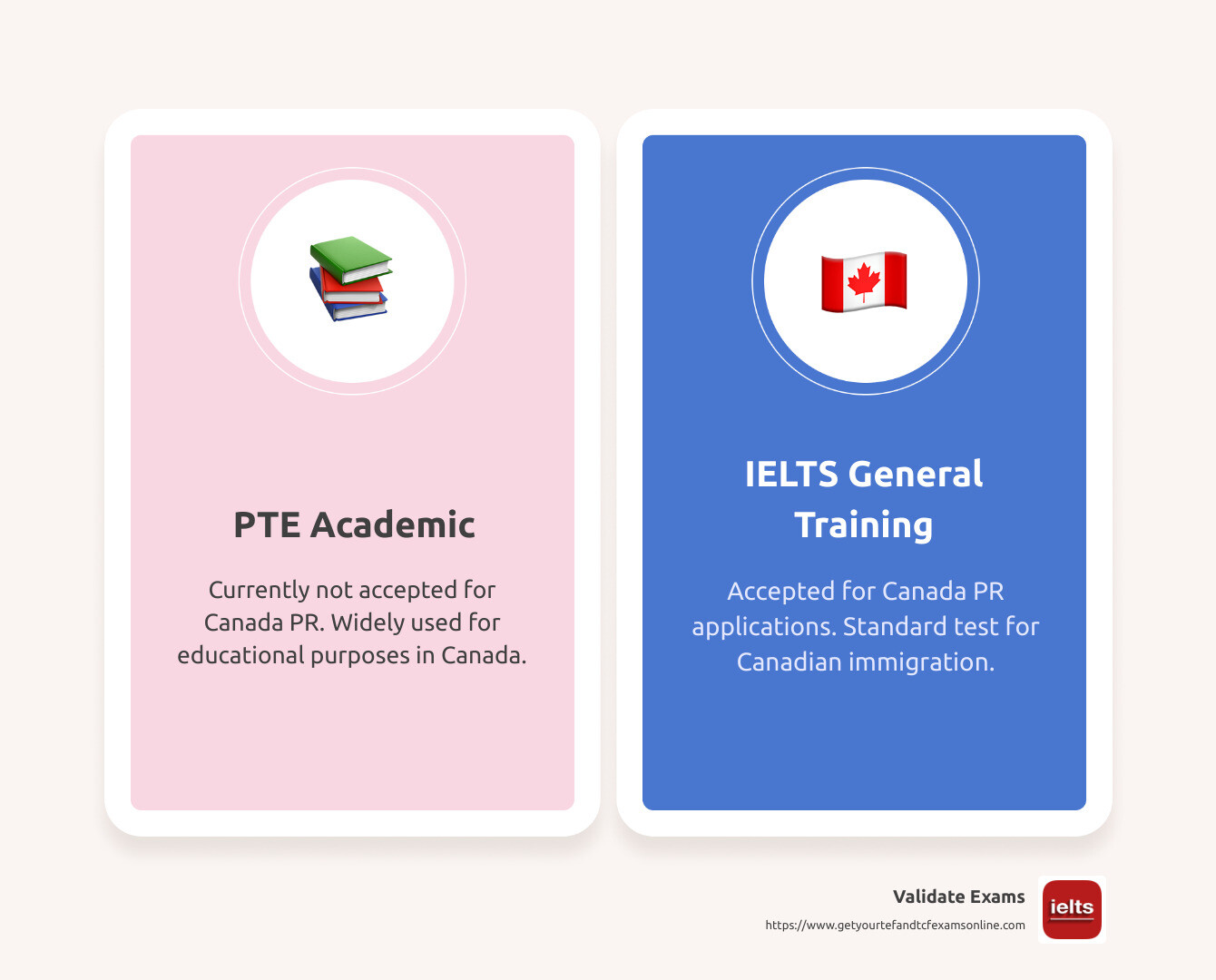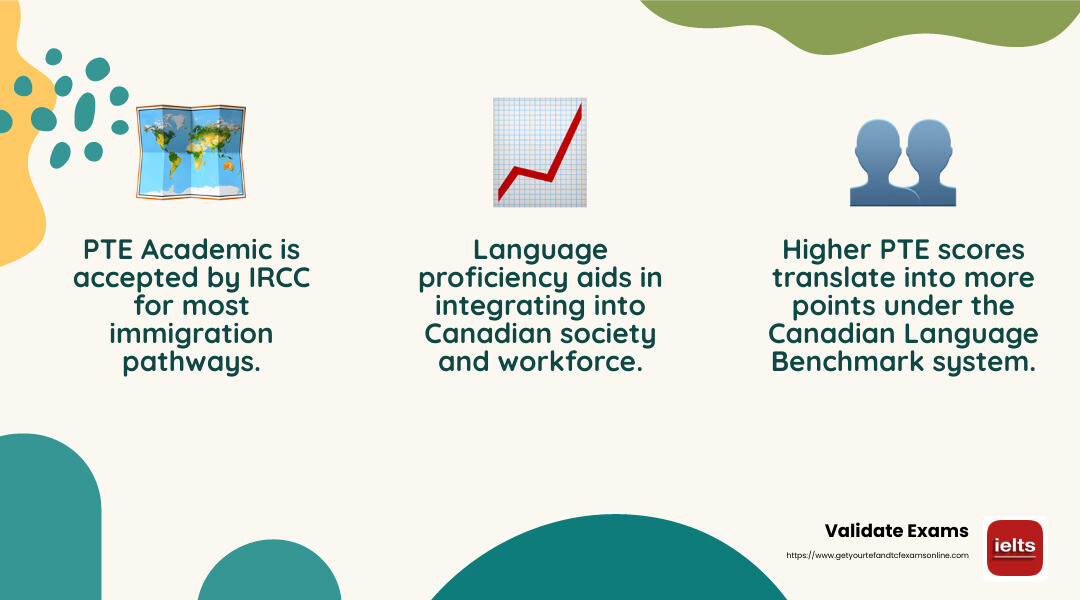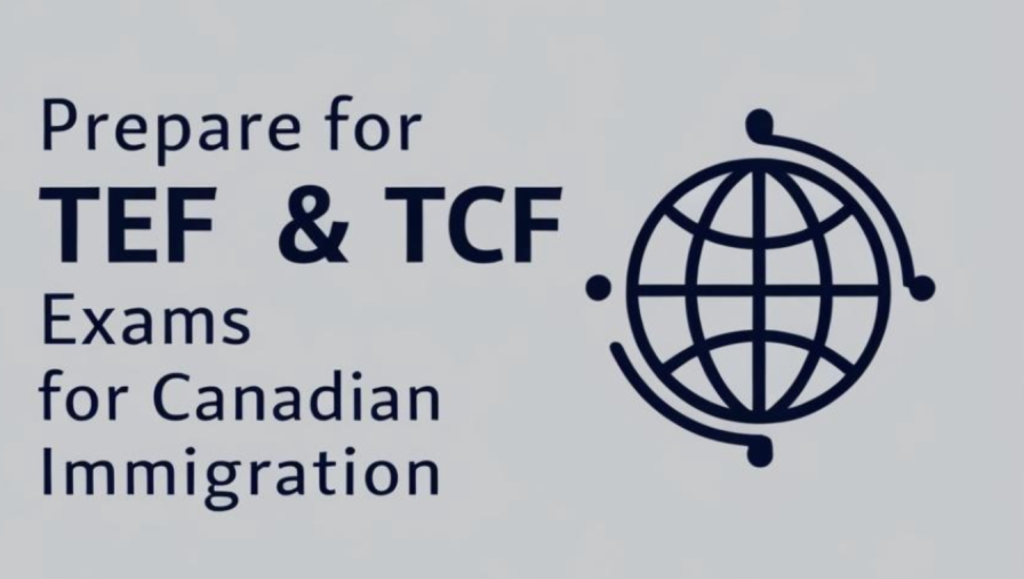PTE Academic for Canada PR: Top Pathway in 2025!
PTE Academic for Canada PR is a topic of interest for many aspiring international students who dream of making Canada their new home. If you’re navigating the pathways to Canadian permanent residency (PR), one of the first crucial steps involves demonstrating your English language proficiency. Here’s what you need to know about the role of PTE Academic in your journey:
- Current Status: As of now, PTE Academic is not accepted for Canadian PR applications. The IELTS General Training test is the recognized standard for proving English proficiency in the immigration process.
- Future Developments: A PTE Core test specifically for work and migration to Canada is in development, which means PTE could become an option in the future.
- Current Uses: PTE Academic is widely accepted for educational purposes, possibly beneficial if you plan to study in Canada before applying for PR.
Imagine navigating the buzzing halls of your dream Canadian university with newfound confidence, knowing your language skills meet the mark. Although PTE Academic isn’t currently your ticket to Canada PR, it’s a valuable asset for academic pursuits. As someone deeply experienced in teaching and examining global language proficiency exams, I am Baddo Magical, dedicated to simplifying your path to international study. Stay tuned as we dig deeper into PTE Academic’s formats, scoring system, and its role in immigration.

Understanding PTE Academic
Test Format and Structure
The PTE Academic test is designed to evaluate your English language skills comprehensively. It covers three main sections: Speaking and Writing, Reading, and Listening. Each section is crafted to assess different aspects of your English proficiency.
- Speaking and Writing: This section is the longest, spanning approximately 54 to 67 minutes. It includes tasks like personal introductions, summarizing written texts, and essay writing. You’ll need to express yourself clearly and coherently.
- Reading: This part takes about 30 minutes. It consists of multiple-choice questions, re-ordering paragraphs, and filling in the blanks. It tests your ability to understand written English in everyday contexts.
- Listening: Lasting between 45 to 57 minutes, this section includes tasks like summarizing spoken texts and multiple-choice questions based on audio clips. You must pay close attention as each audio clip is played only once.
Scoring and Results
The scoring of the PTE Academic test is a blend of AI and human scorers. This combination ensures that your skills are evaluated accurately and consistently. The test is scored on a scale from 10 to 90, with higher scores indicating better proficiency.
- AI Scoring: Automated systems score tasks with clear, objective criteria, such as word count and grammar use.
- Human Scorers: They assess more subjective elements, like pronunciation and fluency, ensuring a fair evaluation.
Once you’ve completed the test, you can expect to receive your results quickly—usually within two business days. This speedy turnaround means you can plan your next steps without delay.
You can take the PTE Academic at one of the many test centers available worldwide. With over 400 locations in 117 countries, finding a convenient test center is easy. Just remember to bring valid identification, as this is required to verify your identity at the test center.

By understanding the PTE Academic’s format and scoring, you’re better prepared to tackle the test and achieve the scores you need for your academic goals.
PTE Academic for Canada PR
The PTE Academic test is becoming an essential tool for those seeking Canadian Permanent Residency (PR). To qualify for immigration, you must demonstrate your English language proficiency. The PTE Academic is now accepted by Immigration, Refugees and Citizenship Canada (IRCC) for various immigration pathways, except the Student Direct Stream (SDS). This makes it a viable choice for skilled workers and other applicants aiming for Canada PR.
Why is language proficiency important? Because it helps you integrate into the Canadian community and workforce. The Canadian Language Benchmark (CLB) system translates your PTE scores into points. Higher scores mean more points, which can significantly boost your immigration application.

Preparing for PTE Academic
Tips for Success
Getting ready for the PTE Academic can seem overwhelming, but with the right approach, you can boost your confidence and scores. Here’s how you can prepare effectively:
1. Dive into Study Materials
Start with the official PTE Academic study guide. It gives you a clear picture of what to expect. Also, look for reputable study books that focus on each section of the test—Speaking and Writing, Reading, and Listening. Use these resources to understand the test format and question types.
2. Practice Tests are Your Best Friend
Practice makes perfect. Take full-length practice tests to simulate the real test environment. These tests help you get used to the timing and pressure. Plus, they highlight areas where you need improvement. Many online platforms offer free and paid practice tests that mimic the real PTE Academic.
3. Use Online Resources Wisely
The internet is full of resources, but not all are created equal. Websites like Validate Exams offer custom training programs and exclusive materials. These resources can be a game-changer in your preparation. Make sure to choose platforms with good reviews and success stories.
4. Test Preparation Strategies
Create a study schedule that covers all sections of the test. Spend more time on your weak areas but don’t neglect your strengths. Break your study sessions into manageable chunks to prevent burnout. Consistent, focused study sessions are more effective than cramming.
5. Retake Strategies
If your first attempt doesn’t go as planned, don’t worry. Retaking the test can work in your favor. Use the experience to understand where you went wrong. You’ll be more familiar with the test format, reducing anxiety the next time around. Many find their scores improve significantly upon retaking.
6. Enroll in Online Courses
If self-study isn’t enough, consider online courses. They offer structured learning paths and expert guidance. Choose courses that provide interactive lessons and feedback on your performance. This can give you a deeper understanding of the test material and improve your skills.
By leveraging these tips, you’ll be well on your way to achieving the score you need on the PTE Academic. Preparation is key to success, so start early and be consistent in your efforts.
Frequently Asked Questions about PTE Academic for Canada PR
Is PTE Academic accepted for Canada PR?
Yes, the PTE Academic is officially accepted for Canadian immigration purposes. The IRCC (Immigration, Refugees and Citizenship Canada) has recognized it for the Student Direct Stream (SDS) application, which is a fast-track process for students applying to study in Canada. While it is widely accepted for educational purposes, as of July 2023, the PTE Core test for work and migration purposes is expected to be accepted later this year.
What is the minimum PTE score for Canada PR?
The minimum PTE Academic score required for Canadian immigration depends on the specific purpose. For a Canada student visa, you’ll need at least a score of 45. However, if you’re aiming for undergraduate or postgraduate courses, higher scores are necessary. For example, most undergraduate programs require a minimum score of 50, while postgraduate qualifications typically need at least 65. Advanced courses like Law or Medicine may demand scores from 60 to 70 or higher.
How does PTE Academic compare to other tests?
When comparing PTE Academic to other language tests like the IELTS, there are some key differences:
- Test Format: PTE Academic is fully computer-based and uses AI for scoring, ensuring consistency and objectivity. In contrast, IELTS has both paper-based and computer-based options, with a face-to-face speaking test.
- Global Recognition: While IELTS is accepted by over 12,000 institutions globally, PTE Academic is newer and recognized by around 3,000 organizations. However, its acceptance is growing, especially in educational institutions.
- Scoring System: PTE Academic scores range from 10 to 90, with higher scores indicating better proficiency. IELTS scores are on a band scale from 0 to 9. For Canadian immigration, IELTS scores are translated into the Canadian Language Benchmark (CLB) system.
- Test Duration: PTE Academic takes approximately 2 hours and 45 minutes, whereas IELTS can take up to 3 hours, depending on the format.
For those seeking Canadian PR, choosing between these tests may depend on personal preference for test format and acceptance by specific institutions or immigration pathways.
Conclusion
Choosing the right language test is crucial for anyone aiming for Canadian permanent residency, and the PTE Academic is a strong contender. At Validate Exams, we understand the challenges and stress that come with preparing for these tests. That’s why we offer a unique solution that guarantees results without the traditional exam process.
Why Choose Validate Exams?
- Stress-Free Certification: Our process eliminates the anxiety of test day. No need to worry about last-minute nerves or unexpected issues at the test center.
- Guaranteed Scores: We provide genuine and verifiable language proficiency certificates with guaranteed scores. This ensures that you meet the necessary requirements for Canadian immigration.
- Fast and Convenient: Save time and effort with our streamlined service. Receive your certification quickly, allowing you to focus on other important aspects of your immigration journey.
By choosing Validate Exams, you can confidently steer the path to Canadian permanent residency without the usual problems. Our service is designed to provide peace of mind and a clear path forward.
Ready to take the next step? Learn more about how we can help you achieve your language certification goals by visiting our language certificate page.
With Validate Exams, you’re not just preparing for a test—you’re securing your future in Canada.

